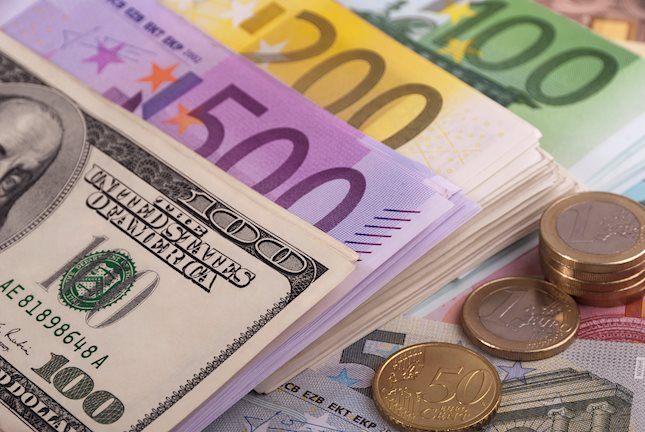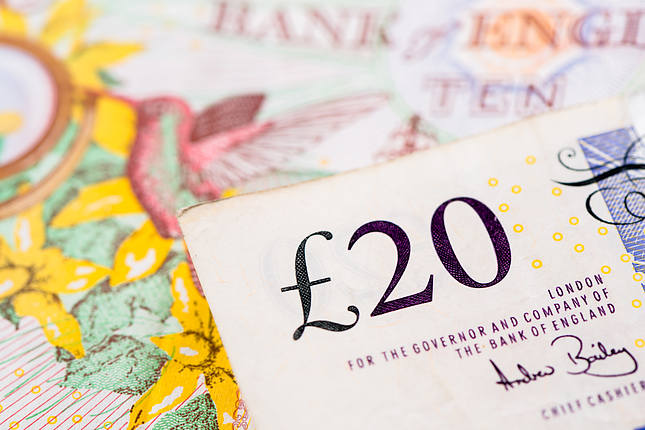- The US Dollar trades flat to a touch softer in the PCE aftermath.
- Markets are looking for direction with PCE in line of expectations.
- The US Dollar Index trades around 104.00, unable to move away from any direction.
The US Dollar (USD) is steadying in a very tight range in the US Personal Consumption Expenditures (PCE) Price Index data release aftermath. The Greenback is moving up and down around 104.00, though looks unable to unchain itself from the level in any direction. It looks like markets are still in a wait-and-see pattern and might look forward to March for the actual central bank rate decisions to shed more clarity on where to place the DXY.
On the economic front, some lighter data ahead with the Kansas Fed Manufacturing Activity for February. No less than three, even four for those who want to stay up late, US Federal Reserve speakers set to release comments on the current monetary policy. Head of the St Louis Fed Christopher Waller advocated for three rate cuts this year in overnight comments.
Daily digest market movers: Easing
- At 13:30 GMT, both the Jobless Claims and Personal Consumption Expenditures Price Index were released:
- Jobless Claims for this week:
- Weekly Initial Jobless Claims went from 202,000 to 215,000.
- Continuing Jobless Claims went from 1.860 million to 1.905 million.
- Personal Consumption Expenditures (PCE) Price Index for January:
- The monthly Headline PCE accelerated from 0.2% to 0.3% as expected, while the yearly reading went from 2.6% to 2.4%.
- Fore the core reading, which excludes the more volatile categories of food and energy, the monthly PCE went from 0.2% to 0.4%. The yearly core PCE went from 2.9% to 2.8%. Both as expected.
- Personal Income increased, from 0.3% to 1.0%, while Personal Spending decelerated substantially, from 0.7% to 0.2%.
- Jobless Claims for this week:
- At14:45 GMT, the Chicago Purchasing Managers Index for February contracted from 46 to 44.
- At 15:00 GMT, Pending Home Sales declined from 5.7% to -4.9%, which means the segment is in contraction.
- the last economic number for this Thursday will be the Kansas City Fed Manufacturing Activity Index for February. The previous number was at -17, with no forecast pencilled in.
- A slew of US Federal Reserve speakers will make its way to the stage as well:
- Expect around 15:50 GMT comments from the head of the Atlanta Fed, Raphael Bostic.
- Briefly after Bostic, around 16:00 GMT, the head of the Chicago Fed Austan Goolsbee will speaking..
- Around 18:15 GMT, Loretta Mester, head of the Cleveland Fed, will also take the stage..
- Overnight, at 01:10 GMT, John Williams from the New York Fed will shed his light as well at the start of Friday.
- Equities are applauding the in-line PCE report, which eases the negativeness from the red hot Consumer Price Index (CPI) report from two weeks ago. All US equity futures are in the green ahead of the US opening bell while european equities are near 0.50% of intraday gains.
- According to the CME Group’s FedWatch Tool, expectations for a Fed pause in the March 20 meeting are at 97.5%, while chances of a rate cut stand at 2.5%.
- The benchmark 10-year US Treasury Note trades around 4.22%, near session's low.
US Dollar Index Technical Analysis: Yawn, DXY unable to move away
The US Dollar Index (DXY) is postponing its day of ordeal by another week after even the recent PCE data release could not move the needle for the Greenback. The report almost fell completely in line with expectations, which were elevated after a hotter CPI print two weeks ago and some surprise upticks in the PCE data during the US Gross Domestic Product (GDP) release on Wednesday. Traders are again keeping their powder dry and are unwilling to pick a direction, possibly awaiting both the European Central Bank and the US Federal Reserve meetings in March before picking a direction and unchaining the DXY finally.
To the upside, the 100-day Simple Moving Average (SMA) near 103.98 is still the first element acting as a cap. Should the US Dollar be able to cross 104.60, 105.12 is the next key level to keep an eye on. One step beyond there comes 105.88, the high from November 2023. Ultimately, 107.20 – the high of 2023 – could come back into scope.
Looking down, the 200-day Simple Moving Average at 103.74 has been broken twice recently, making it a weak support. The 200-day SMA should not let go that easily though, so a small retreat back to that level could be more than granted. Ultimately, should it lose its force with the ongoing selling pressure, prices could fall to 103.16, the 55-day SMA, before testing 103.00.
Fed FAQs
What does the Federal Reserve do, how does it impact the US Dollar?
Monetary policy in the US is shaped by the Federal Reserve (Fed). The Fed has two mandates: to achieve price stability and foster full employment. Its primary tool to achieve these goals is by adjusting interest rates.
When prices are rising too quickly and inflation is above the Fed’s 2% target, it raises interest rates, increasing borrowing costs throughout the economy. This results in a stronger US Dollar (USD) as it makes the US a more attractive place for international investors to park their money.
When inflation falls below 2% or the Unemployment Rate is too high, the Fed may lower interest rates to encourage borrowing, which weighs on the Greenback.
How often does the Fed hold monetary policy meetings?
The Federal Reserve (Fed) holds eight policy meetings a year, where the Federal Open Market Committee (FOMC) assesses economic conditions and makes monetary policy decisions.
The FOMC is attended by twelve Fed officials – the seven members of the Board of Governors, the president of the Federal Reserve Bank of New York, and four of the remaining eleven regional Reserve Bank presidents, who serve one-year terms on a rotating basis.
What is Quantitative Easing (QE) and how does it impact USD?
In extreme situations, the Federal Reserve may resort to a policy named Quantitative Easing (QE). QE is the process by which the Fed substantially increases the flow of credit in a stuck financial system.
It is a non-standard policy measure used during crises or when inflation is extremely low. It was the Fed’s weapon of choice during the Great Financial Crisis in 2008. It involves the Fed printing more Dollars and using them to buy high grade bonds from financial institutions. QE usually weakens the US Dollar.
What is Quantitative Tightening (QT) and how does it impact the US Dollar?
Quantitative tightening (QT) is the reverse process of QE, whereby the Federal Reserve stops buying bonds from financial institutions and does not reinvest the principal from the bonds it holds maturing, to purchase new bonds. It is usually positive for the value of the US Dollar.
Information on these pages contains forward-looking statements that involve risks and uncertainties. Markets and instruments profiled on this page are for informational purposes only and should not in any way come across as a recommendation to buy or sell in these assets. You should do your own thorough research before making any investment decisions. FXStreet does not in any way guarantee that this information is free from mistakes, errors, or material misstatements. It also does not guarantee that this information is of a timely nature. Investing in Open Markets involves a great deal of risk, including the loss of all or a portion of your investment, as well as emotional distress. All risks, losses and costs associated with investing, including total loss of principal, are your responsibility. The views and opinions expressed in this article are those of the authors and do not necessarily reflect the official policy or position of FXStreet nor its advertisers. The author will not be held responsible for information that is found at the end of links posted on this page.
If not otherwise explicitly mentioned in the body of the article, at the time of writing, the author has no position in any stock mentioned in this article and no business relationship with any company mentioned. The author has not received compensation for writing this article, other than from FXStreet.
FXStreet and the author do not provide personalized recommendations. The author makes no representations as to the accuracy, completeness, or suitability of this information. FXStreet and the author will not be liable for any errors, omissions or any losses, injuries or damages arising from this information and its display or use. Errors and omissions excepted.
The author and FXStreet are not registered investment advisors and nothing in this article is intended to be investment advice.
Recommended content
Editors’ Picks

EUR/USD treads water just above 1.0400 post-US data
Another sign of the good health of the US economy came in response to firm flash US Manufacturing and Services PMIs, which in turn reinforced further the already strong performance of the US Dollar, relegating EUR/USD to the 1.0400 neighbourhood on Friday.

GBP/USD remains depressed near 1.2520 on stronger Dollar
Poor results from the UK docket kept the British pound on the back foot on Thursday, hovering around the low-1.2500s in a context of generalized weakness in the risk-linked galaxy vs. another outstanding day in the Greenback.

Gold keeps the bid bias unchanged near $2,700
Persistent safe haven demand continues to prop up the march north in Gold prices so far on Friday, hitting new two-week tops past the key $2,700 mark per troy ounce despite extra strength in the Greenback and mixed US yields.

Geopolitics back on the radar
Rising tensions between Russia and Ukraine caused renewed unease in the markets this week. Putin signed an amendment to Russian nuclear doctrine, which allows Russia to use nuclear weapons for retaliating against strikes carried out with conventional weapons.

Eurozone PMI sounds the alarm about growth once more
The composite PMI dropped from 50 to 48.1, once more stressing growth concerns for the eurozone. Hard data has actually come in better than expected recently – so ahead of the December meeting, the ECB has to figure out whether this is the PMI crying wolf or whether it should take this signal seriously. We think it’s the latter.

Best Forex Brokers with Low Spreads
VERIFIED Low spreads are crucial for reducing trading costs. Explore top Forex brokers offering competitive spreads and high leverage. Compare options for EUR/USD, GBP/USD, USD/JPY, and Gold.